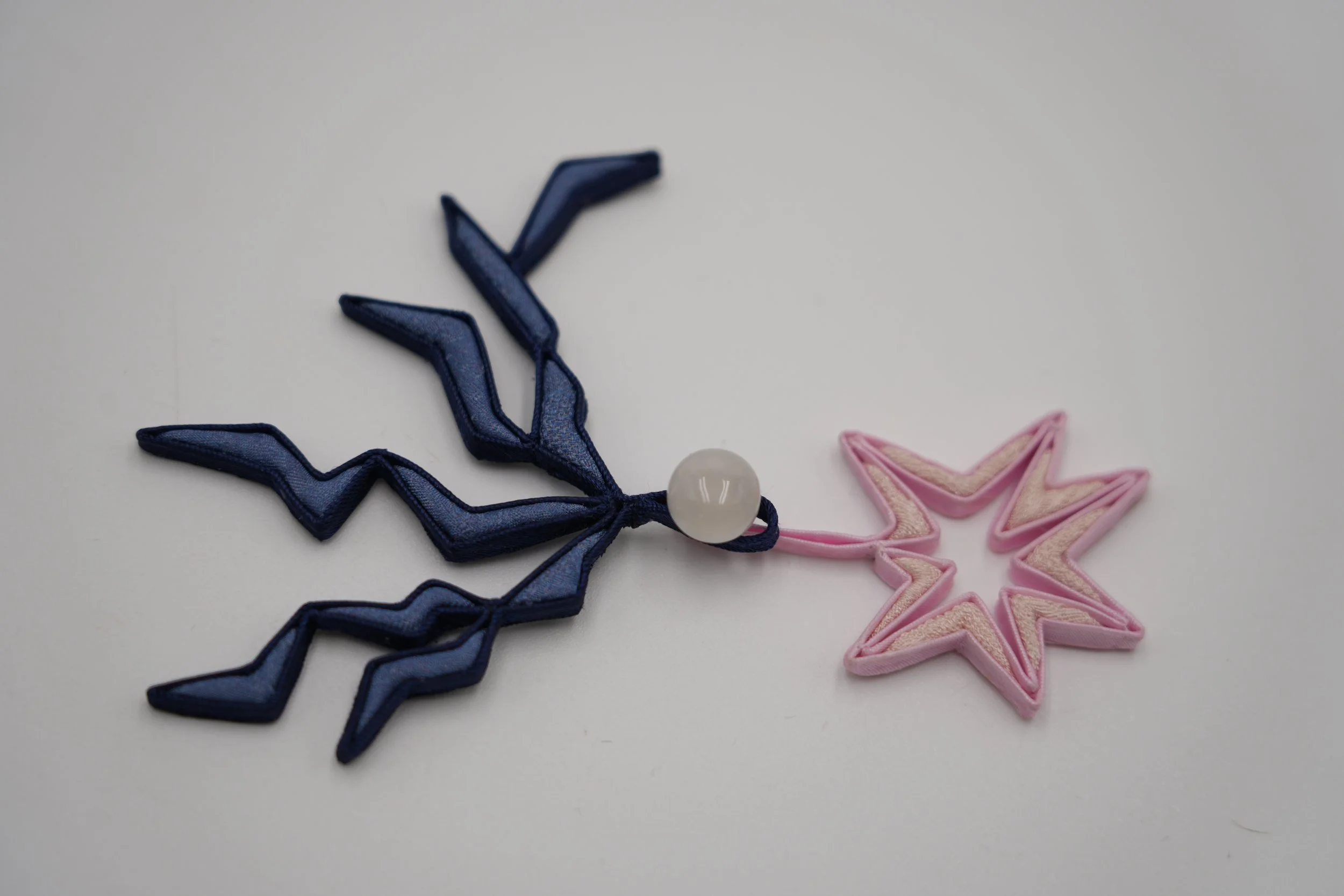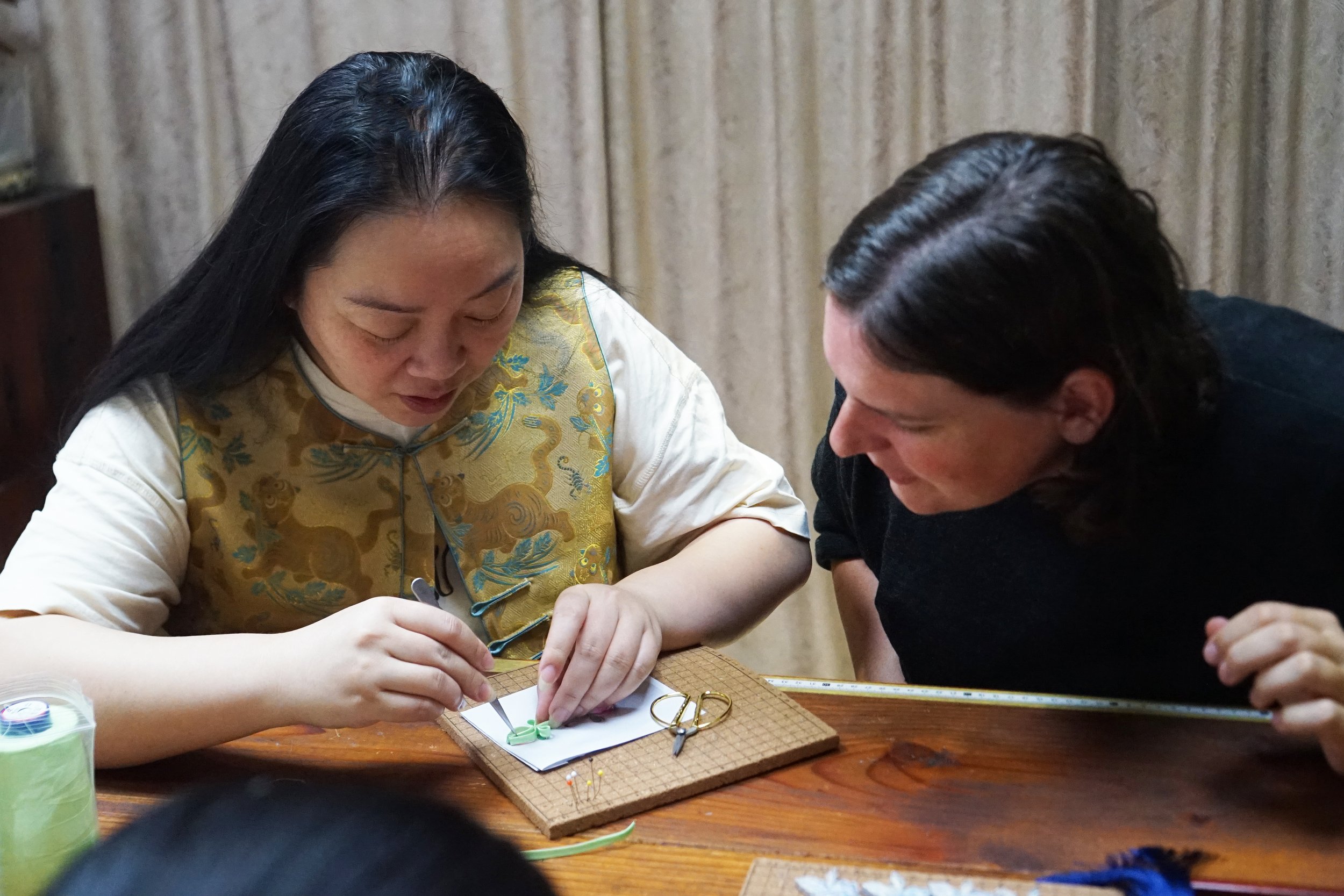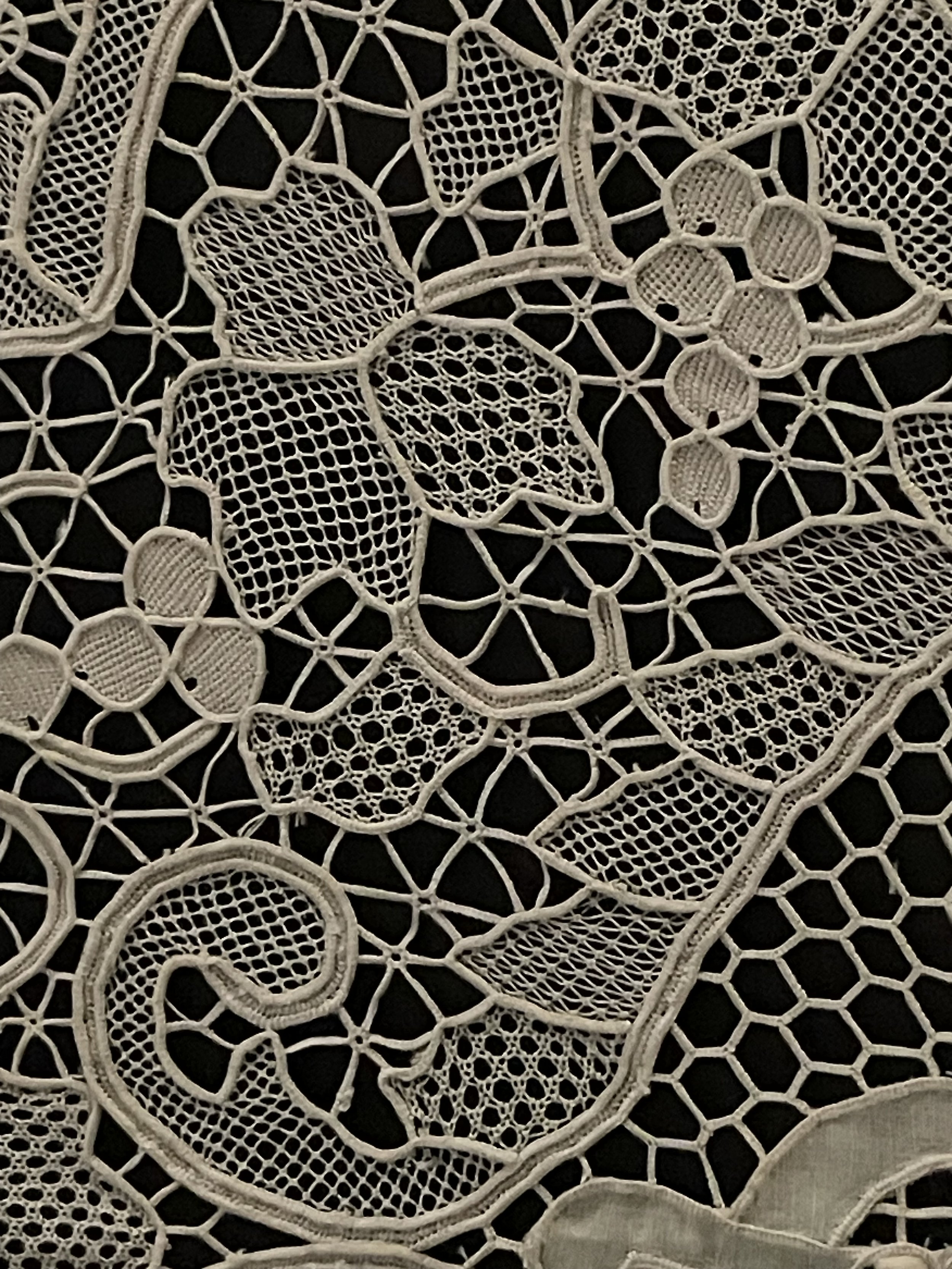Craft encouters – about gaps and connections
Recidency Rong Design Library, Pro Helvetia Shanghai, 2024
Bamboo weaving, Xiaoshan lace and Pankou making are techniques that connect things together, emphasise gaps and relate to textiles. Working with second-hand garments often means finding ways to connect materials and deal with broken garments. The perfection of traditional Chinese craftsmanship has the ability to show the beauty of gaps with upcycling.
Assistant: Xuechen Wang
Support of Lailai Bamboo Studio, Jing er Pankou Studio, Fu Xiaoshan lace Studio
Collaborative Pankou
The pankou is a fastener commonly used for the qipao, a traditional Chinese dress that has evolved since the Qing dynasty. In order to create new pankou designs, a workshop was held with me in the PINWU design studio, in which the eight participants developed pankou designs together. The workshop was intended to emphasise that designing things is a collaborative process in which people share their knowledge with each other.
Bamboo brooches
Bamboo is a local material that grows in the neighbourhood. Weaving is a technique that can be applied to many materials such as textiles, bamboo, metal, etc. There are various brooches that can connect the bamboo weave to the textile. The brooch can be attached to the textile with the material tension of a bamboo strap. The brooch emphasises holes or other details of a textile.
Lace links
Xiaoshan lace is a handicraft from Hangzhou. As the craft originated in Venice, the technique tells a story between Europe and China. Xiaoshan lace uses a needle and various patterns to create a three-dimensional effect, creating a contrast by experimenting with different materials and patterns in combination with the noble technique of Xiaoshan lace. In the upcycled jumper, the Xiaoshan lace is used to close the holes and emphasise the gaps with the lace.





























